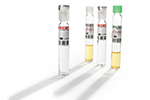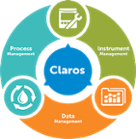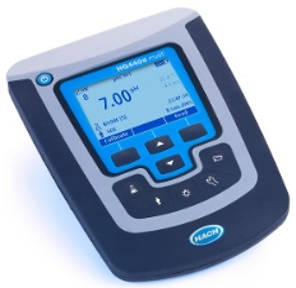-
Products
-
Lab Instruments
-
Lab Meters and Probes
Calibration Standards Sension+ Meters and ProbesOther Reagents
- Chemistries, Reagents, and Standards
-
Online Analysers
Ammonium Analysers Analytical Shelters Chlorine Analysers
- CL17sc
- CL10sc Amperometric
- 9184 sc Amperometric
- Ultra Low Range CL17sc Colorimetric Chlorine Analyser
Ozone Turbidity AnalysersEZ Series Analysers- Iron
- Aluminium
- Manganese
- Phosphate
- Chloride
- Cyanide
- Fluoride
- Sulphate
- Sulphide
- Arsenic
- Chromium
- Copper
- Nickel
- Zinc
- Ammonium
- Total Nitrogen
- Total Phosphorus
- Phenol
- Volatile Fatty Acids
- Alkalinity
- ATP
- Hardness
- Toxicity
- Sample Preconditioning
- Boron
- Colour
- Nitrate
- Nitrite
- Silica
- Hydrogen Peroxide
- EZ Series Reagents
-
Online Sensors and Controllers
Digital Controllers (Transmitters) Controllers (Analogue)
- SC4500
- Orbisphere 366x Ex
- Orbisphere 410/510 Carbon Dioxide
- Orbisphere 410/510 Oxygen
- Orbisphere 410/510 Ozone
- Orbisphere 51x Hydrogen
- Orbisphere 51x Nitrogen
Multi-Parameter pH & ORP Sensors- 1200-S ORP
- 1200-S pH
- 12mm pH/ORP
- 8362 sc High Purity
- Combination pH/ORP
- Differential pH
- Digital Differential ORP
- Digital Differential pH
- LCP ORP
- LCP pH
Conductivity Sensors- 3400 Analogue Contacting
- 3400 Digital Contacting
- 3700 Analogue Inductive
- 3700 Digital Inductive
- 3798 sc Electrodeless
- 9523 Cation Conductivity
- 9525 DCCP System
-
Automated Lab Systems
Automatic Laboratory Analyser
- Multiparameter Online Panels
- Claros Water Intelligence System
-
Lab Equipment and Supply
Apparatus
- Brushes
- Clamps, Rings & Stands
- Crucibles
- Crucibles & Casseroles
- Dispensers & Droppers
- Grab Samplers
- Oil and Grease
- Other Apparatus
- Pipet Aids
- Pipettes
- Racks
- Stir Bars
- Tubing
- Weighing Accessories
General Lab Consumables Glassware/PlasticwareInstruments -
Microbiology
Accessories and Chemicals Dehydrated MediaLabware
- Accessories
- Funnels, Pumps & Manifolds
- Microbiology Filters
- Petri Dishes & Accessories
- Sampling Bags
- Vials, Tubes, Bottles & Racks
- Samplers
-
Test Kits & Strips
Test KitsSingle Parameter Test Kits Test Strips
-
Hach eLearning
Lab Product Training Process Product Training
- AN-ISE sc
- Amtax sc
- B3500
- B7000
- CL17sc
- Differential pH Sensor
- Filtrax Sample Filtration Systems
- LDO sc
- Nitratax sc
- Orbisphere 6110
- Phosphax sc
- SC1000
- SC200
- SC4500
- Solitax sc
- TU5300sc/TU5400sc
-
Lab Instruments
-
Parameters
-
-
Software Solutions
-
Claros Water Intelligence System
Product Pillars Process Management
- Solutions For:
- BOD/COD Removal
- Nitrification/Denitrification
- Phosphorous Removal
- Sludge Management
Data Management- Solutions For:
- Collection
- Visualization & Analytics
- Reporting
- Data Accuracy
Instrument Management- Solutions For:
- Maintenance
- Troubleshooting
- Remote Access
- Lab and Process Comparison
Industry Challenges Regulatory Compliance Cost Savings Remote Operations Process Optimisation Equipment MaintenanceClaros News Claros Software Release Notes
-
Claros Water Intelligence System
- Industries
- Service
- News & Events
United Kingdom
Choose your country or region:
Europe
Americas
Asia - Australasia
- Australia
- Mainland China
- India
- Indonesia
- Japan
- Malaysia
- New Zealand
- Philippines
- Singapore
- South Korea
- Thailand (Thai)
- Taiwan
Middle East - Africa
Dissolved Oxygen
What is Dissolved Oxygen (DO)?
Dissolved oxygen is a measure of the amount of gaseous oxygen contained in water. Healthy waters that can support life must contain dissolved oxygen (DO).
Dissolved Oxygen enters water by:
- direct absorption from the atmosphere.
- rapid movement from winds, waves, currents or mechanical aeration.
- aquatic plant life photosynthesis as a by-product of the process.
Factors that contribute to the concentration of Dissolved Oxygen in water:
- Atmospheric pressure: Higher atmospheric pressure allows bodies of water to retain more dissolved oxygen. The pressure from above allows the water to hold more oxygen molecules. Therefore, DO concentrations are normally lower at higher elevations due to lower atmospheric pressure.
- Temperature: A body of water with lower temperature can contain more dissolved oxygen because oxygen molecules have less movement. The increased movement of oxygen molecules in warmer water allows them to escape out of the water into the air.
- Depth of the water: The shallower the water, the higher the concentration of DO because wind creating waves on the surface increases DO, as well as aquatic plants living in shallower light-filled waters create DO as a by-product of photosynthesis.
- Salinity: Lower salinity contributes to a higher concentration of DO because salts affect the solubility of gases, essentially driving them out of the water.
- Bioactivity: Lower bioactivity of microorganisms in water leads to a higher concentration of DO, because microorganisms feeding on organics and decaying matter use oxygen in their respiration.
Why Monitor Dissolved Oxygen?
Measuring dissolved oxygen in water and treatment to maintain proper DO levels, are crucial functions in a variety of water treatment applications. While dissolved oxygen is necessary to support life and treatment processes, it can also be detrimental, causing oxidation that damages equipment and compromises product. Dissolved oxygen affects:
-
Quality: The DO concentration determines the quality of source water. Without enough DO, water turns foul and unhealthy affecting the quality of the environment, drinking water and other products.
-
Regulatory Compliance: To comply with regulations, wastewater often needs to have certain concentrations of DO before it can be discharged into a stream, lake, river or waterway. Healthy waters that can support life must contain dissolved oxygen.
-
Process Control: DO levels are critical to control biological treatment of wastewater, as well as the biofiltration phase of drinking water production. In some industrial applications (e.g. power production) any DO is detrimental for steam generation and must be removed and its concentrations must be tightly controlled.
At Hach ®, find the testing equipment, resources, training and software you need to successfully monitor and manage dissolved oxygen levels in your specific process application.
Featured Products for Monitoring Dissolved Oxygen
LDO 2 sc Luminescent Dissolved Oxygen Sensors
Hach’s next generation LDO ® (luminescent dissolved oxygen) Probe requires no calibration for the entire 2-year life of the sensor cap, which means it is ready to start measuring your DO from 0 to 20 ppm right out of the box.
Learn MoreThe HQ Series is for water quality professionals who want to perform electrochemical analysis for field and lab environments.
Learn MoreHQ Series/HQD Meters/Intellical Probes
The rugged and durable HQD Laboratory Meters are designed to give drinking water and wastewater professionals the greatest confidence and flexibility.
Learn MoreRed Rod probes offer exceptional performance and response time across a wide variety of sample types in the laboratory. Rugged stainless steel outdoor probes are extremely practical for on-site analysis in 0.05 – 20 ppm range.
Learn MoreOrbisphere K1100/K1200 Oxygen Sensors
Orbisphere ® K1000 Sensors are maintenance-free, optical LDO Sensors designed for monitoring oxygen in power plants and other low (0 – 2 ppm) and high (0 – 40 ppm) range applications. Martin Leyendecker: „The K1200 is indeed the sensor version which we sell into nuclear power applications. But from a technical standpoint it has not been specifically designed for these kind of applications. So, I would prefer to delete the last phrase "The K1200 series also includes a sensor designed for nuclear power applications" since it is technically not true”
Learn MoreOrbisphere M1100 Oxygen Sensors
The Orbisphere ® M1100 Optical Sensor, together with the Orbisphere ® 410 (one channel) and the Orbisphere ® 510 (multi-channel) Controller, offers a new way of monitoring oxygen in the beverage production process and other low (0 – 2 ppm) and high (0 – 40 ppm) range applications.
Learn More9582 sc Dissolved Oxygen Electrochemical Sensors are designed for ppb-level measurements in ultrapure water, boiler water and condensate. They are an integral part of a complete water analytics system designed for the power industry.
Learn MoreOrbisphere GA2x00 Oxygen Sensors
The Orbisphere ® GA2400/GA2800 EX oxygen (O 2) Electrochemical (EC) Sensors are designed for process monitoring, as well as laboratory analysis in the liquid or gas phases.
Learn More
Which Processes Require the Monitoring of Dissolved Oxygen?
Wastewater Treatment
Influent water entering a facility usually has a low DO concentration because it contains organics and microorganisms, which consume oxygen while feeding on the organics.
Monitoring DO helps promote efficiency in aeration basins. By using online DO measurement equipment, a facility can reduce energy costs by adjusting aeration to match the DO required by the organic load. Continuous measurement and adjustment ensure that the microorganisms have enough oxygen to consume organics while allowing the facility to conserve energy by reducing aeration when possible.
DO levels need to be replenished in effluent water leaving the facility to meet minimum DO level requirements to protect ecosystems and to comply with regulatory discharge permits. These regulations ensure that effluent water does not deplete oxygen levels in receiving waterways.
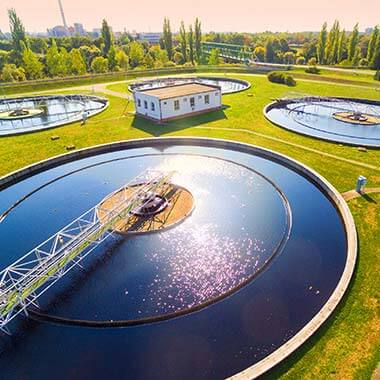
Industrial Steam Generation
Because DO causes corrosion in equipment, achieving low or no DO can prevent leaks, failures and shutdowns.

Drinking Water Treatment
Monitoring of DO and the temperature of the source water can provide early warning for seasonal rise in manganese concentration. High levels of DO accelerates corrosion in water pipes. Low levels of DO can cause an increase in ferrous iron concentration, resulting in discolouration at the tap when water is aerated.
It is important to maintain a balanced concentration of DO in finished water discharged into the distribution system. Balanced DO can improve the taste of drinking water.
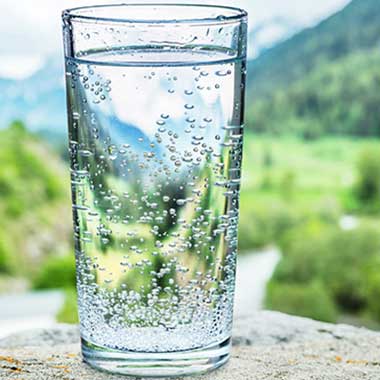
Beverage Industry
Soft drink corporations set quality standards for DO levels to stabilise taste, to ensure shelf-life and to avoid corrosion in the packaged cans.
Breweries monitor DO because fermentation requires oxygenation. However, for packaging, low DO levels are necessary to improve shelf-life and to stabilise taste/odour. ( Beverage Analysis, Testing, and Measurement Solutions)
Wine producers maintain low DO content by adding sulfites to the product to prevent oxidation, loss of aroma, discolouration, rapid aging and the growth of microorganisms.
Juice producers maintain low DO to ensure flavour stability.
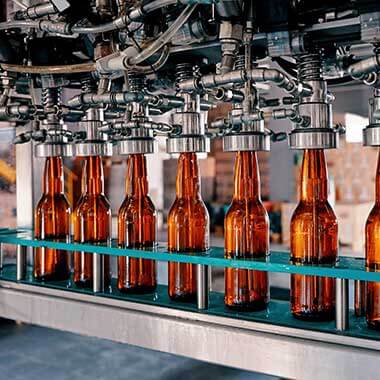
Aquaculture
In aquariums and fish farms, a minimum DO level of 4.5 mg/L is necessary to support fish life. Too much DO can result in promoting diseases.
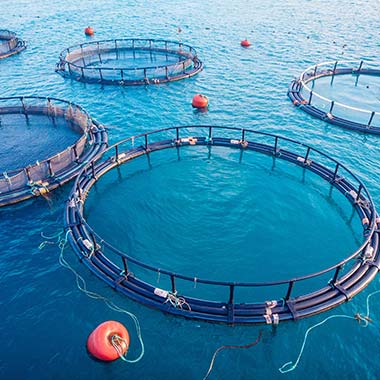
Environmental Monitoring
Without a healthy concentration of DO, a body of water can experience hypoxia – a condition in which there is not enough oxygen to support aquatic life.

How is Dissolved Oxygen Monitored?
Because DO is a dissolved gas, it must be measured on site, ideally in the body of water. Drawing a grab sample introduces atmospheric oxygen and temperature changes interfering with the accuracy of the measurement.
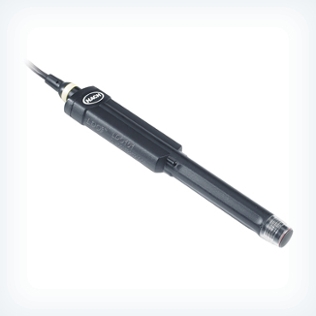
Electrodes
Because DO is a dissolved gas, it must be measured on site, ideally in the body of water. Drawing a grab sample introduces atmospheric oxygen and temperature changes interfering with the accuracy of the measurement.
Optical Sensors
This method uses light and luminescent material to measure DO. These electrodes require less maintenance, hold calibration, are not affected by hydrogen sulfide or other dissolved gases. They offer accuracy, stability and reproducibility at fast response times.
Electrochemical Sensors
This method utilises Galvanic or Clark-type electrodes (anode and cathode in an electrolyte solution) to measure DO. To ensure accuracy the electrodes require frequent calibration and water samples must be gently stirred.
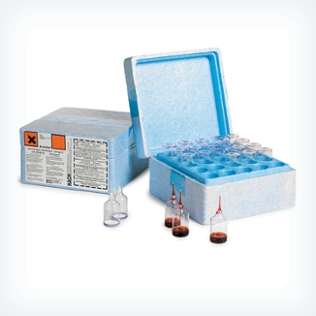
Colorimetric Method
Indigo carmine reacts with the DO in the water producing a blue colour proportional to the DO concentration. The blue colour can be visually compared to a chart or read with a colorimeter or spectrophotometer. This method is portable and suitable for field-use, but it has limitations. The water must be transparent and free of particulates.
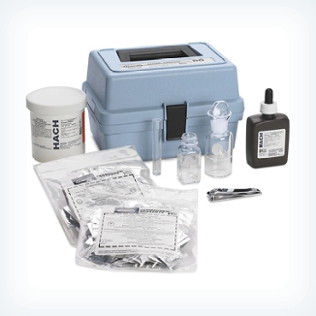
Winkler Titration
This method is performed by adding chemicals (manganese, iodide and hydroxide) to water samples to create a reaction with the DO that forms an acidic solution. The amount of alkali reagent required to neutralise the acid with titration, indicates how much DO was in the original water sample. Though it is considered a traditional method in some areas, it is time consuming and subject to human error. No online instrumentation exists for this method.
Frequently Asked Questions
How can monitoring DO save my treatment plant money?
Up to 70% of a wastewater plant’s energy budget is spent powering their aeration system. For years, these aeration systems were controlled by manually changing the airflow set point, valve positions or speed of the motor because membrane DO sensors were unreliable. LDO allows the systems to automatically control the aeration to a certain DO set point, allowing the blowers to respond to the loading in real time and saving 30 to 60% in energy costs.
Why is DO important?
Dissolved oxygen is necessary to many forms of life including fish, invertebrates, bacteria and plants. These organisms use oxygen in respiration, like organisms on land. Fish and crustaceans obtain oxygen for respiration through their gills, while plant life and phytoplankton require dissolved oxygen for respiration when there is no light for photosynthesis. The amount of DO needed varies from creature to creature. Bottom feeders, crabs, oysters and worms need minimal amounts of oxygen (1-6 mg/L), while shallow water fish need higher levels (4-15 mg/L). Bacteria and fungi also require dissolved oxygen. These organisms use DO to decompose organic material at the bottom of a body of water. Microbial decomposition is an important contributor to the nutrients cycle. However, if there is an excess of decaying organic material (from dying algae and other organisms) in a body of water with infrequent or no turnover (also known as stratification), the oxygen at lower water levels will be used up quicker.
What is DO saturation?
In a stable body of water with no stratification, DO will remain at 100% air saturation. The 100% air saturation means that the water is holding as many dissolved gas molecules at it can in equilibrium. At equilibrium, the percentage of each gas in the water would be equivalent to the percentage of that gas in the atmosphere, which is known as its partial pressure. The water will slowly absorb oxygen and other gases from the atmosphere until it reaches equilibrium at complete saturation. This process is sped up by aeration. It is possible for DO to exceed 100% air saturation in water by biological means.
How does pressure affect oxygen solubility?
Dissolved oxygen concentration will increase as pressure increases. This is true of both atmospheric and hydrostatic pressures. Water at lower altitudes can hold more DO than water at higher altitudes. This relationship also explains the potential for "supersaturation" of waters below the thermocline. At greater hydrostatic pressures, water can hold more DO without it escaping and therefore, dictate lower DO saturation at the same concentration. Gas saturation decreases by ~10% per meter increase in depth due to hydrostatic pressure, given the water temperature is constant. This means that DO at the same concentration can be at 100% air saturation at the surface and it would only be at 70% air saturation 3 meters below the surface.
What affects DO solubility?
Two bodies of water that are both 100% air-saturated do not necessarily have the same concentration of DO. The amount of dissolved oxygen (in mg/L) will vary depending on temperature, pressure and salinity.




